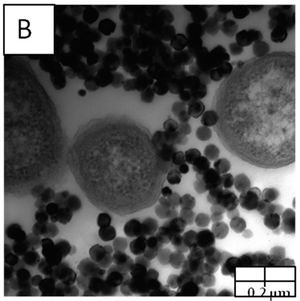Pseudomonas mendocina
Classification
Bacteria; Proteobacteria; Gammaproteobactera; Pseudomonadales; Pseudomonadaceae
Species
|
NCBI: Taxonomy |
Pseudomonas mendocina
Description and Significance
Pseudomonas mendocina is a Gram negative, polar monotrichous flagellated, aerobic, rod shaped bacterium first discovered in 1969 by investigators working to characterize the species Pseudomonas stutzeri. Samples originally assumed to be P. stutzeri were collected in Mendoza, Argentina. These were determined to be a novel species due to an inability to use either starch or maltose as carbon sources. P. mendocina has minor visual distinctions from other members of the genus Pseudomonas. Colonies were described by Palleroni et al. as being “flat, smooth, butyrous, [and] of brownish yellow colour” and this yellow pigmentation was later determined to be due to the presence of carotenoid pigments inside the bacterium (9). Samples of P. mendocina have been isolated in a wide variety of locations. It has been isolated from farmland soil gathered near Tianjin, China, a coastal city (4). A strain of the bacterium possessing resistance genes to heavy metals was found growing in vineyard soil near Riquewihr, France (3). The species rarely causes disease in humans, but cases of P. mendocina infection have been reported in otherwise healthy patients following serious injury or prolonged exposure to the microbe. It has been isolated from patients in a diverse variety of locals including Argentina, Denmark, Singapore, and Israel (2, 5, 8). Given the plethora of locations from which distinct strains of P. mendocina have been isolated, it is likely that this is a cosmopolitan species or close to it.
Apart from its limited medical relevance, P. mendocina has been implicated as a candidate for the bioremediation of ecosystems damaged by man-made pollutants. A strain of P. mendocina has been found to be capable of degrading the organic solvent toluene. Investigators have also successfully transformed genes from this strain into another member of Pseudomonas which was able to degrade toluene with greater efficiency (10). Another strain has been found capable of using the pesticide pentachlorophenol (PCP) as its growth media, degrading it completely in the process while producing no toxic byproducts (6). A strain isolated in China has the ability to synthesize polyhydroxyalkanoates, a group of compounds implicated as a potential therapeutic agent in humans, using only glucose (4).
Genome Structure
The genomes of a number of different P. mendocina strains have been sequenced, often driven by interest in novel characteristics such as pesticide degradation, medical relevance, or heavy metal resistance. Various strains of P. mendocina have genomic sequence lengths ranging from approximately 5 million base pairs to 5.4 million base pairs in a singular circular chromosome. Its GC content rests around 62%, which is high compared to bacteria as a general rule, but is especially high when compared to the average of Gammaproteobacteria, which is approximately 42% (7). The strain isolated from near Tianjin in China contained no plasmids and encoded 4958 proteins (4).
Cell Structure, Metabolism and Life Cycle
P. mendocina is most notable for its incredible metabolic diversity. The microbe can subsist on an astounding variety of mediums including D-glucose, D-fructose, acetate, malontate, DL-hydroxybutyrate, citrate, and ethylene glycol (9). Some rare strains can use complex molecules such as PCP as their sole carbon source (6). It is notable that at least some strains can utilize anaerobic denitrification implying an important role in the nitrogen cycle, reducing the availability of nitrogen compounds necessary for plant growth (9).
Ecology and Pathogenesis
P. mendocina is documented as able to survive on over seventy-five different substrates (9). It has been successfully recovered from both surface soil samples and from aquifer samples with the respective strains each having evolved divergent metabolic strategies to exploit these unique niches (3, 6). The bacterium is able to grow at temperatures ranging from 25ºC to 42ºC (1). The optimal growth temperature is 30ºC and the optimal acidity of the environment would be a pH of 6 (6). Perhaps its most substantial environmental impact is its denitrifying capacity which has ecological implications in the nitrogen cycle (9).
Though P. mendocina rarely presents as a pathogen it can cause severe symptoms in humans requiring hospitalization and intensive treatment regiments (5). Thankfully, given the relative infrequency of human infection, the bacterium is susceptible to a wide variety of antibiotics, though strains resistant to ampicillin and cephalothin have been documented (1). All the documented P. mendocina infections have been resolved with a course of antibiotics. In the blood, P. mendocina infection causes the lysis of erythrocytes (1). The lysis of red blood cells causes symptoms such as fever, endocarditis, and malaise in conjunction with a healthy immune response (5, 8). Of the approximately five documented cases in human subjects, one is inferred to be the result of transmission from an animal host to a human. One patient claimed that he would feed his pet cockatiel using his mouth. When the cockatiel’s water supply was tested, it was found to contain P. mendocina, but no further investigations were made (8).
References
Author
Page authored by Daniel Walsh, student of Prof. Jay Lennon at Indiana University.


